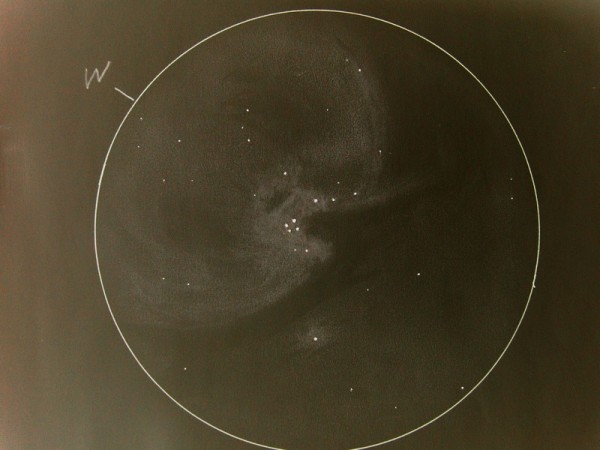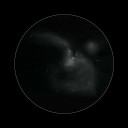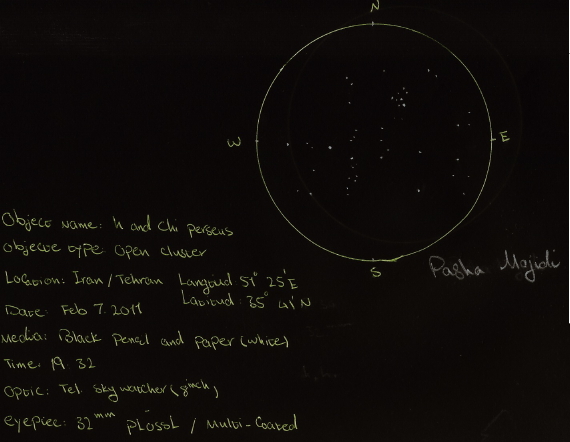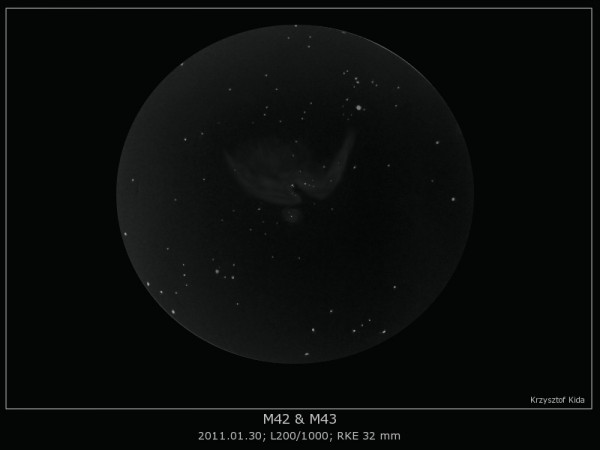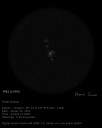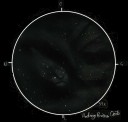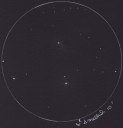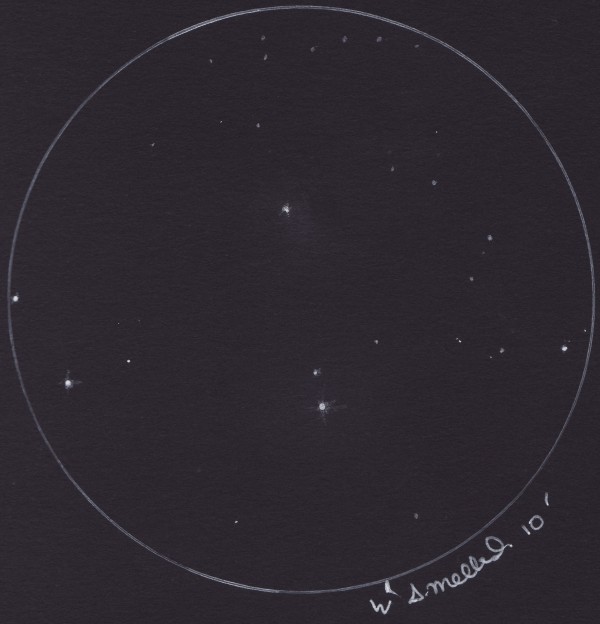
Object Name: Eta Carina Nebula (NGC3372)
Object Type: Nebulae
Location: Itajobi – SP – Brazil
Date: 30/12/2010 – 05h15min U.T.
Media: 0.5mm 2B graphite pencil on white paper, scanned and inverted.
Telescope: 180mm f/D=6 reflector, dob. mount.
Eyepieces: Antares Plössl 10mm; GSO Super Plössl 32mm (as seen in the picture).
Barlow: GSO three-element 2.5x
Turbulence: 3/5 (regular).
Seeing: 4/5 (good).
Fair wind, no clouds, high temperatures.
If you are allowed to point your telescope (or even a bino) toward south, you’ll be able to see this stunning deep sky object. I was waiting Saturn to rise, the sky was nice, cloudless. I had observed this object sometimes before, without knowing its name. That night I decided to sketch it, so I could search for its name later. Positioning each star was surely the hardest part. I’ve observed it from my backyard, not thoroughly dark, but enough to see incredible features, specially using the barlow lens. The Keyhole Nebula, inside Eta Carina Nebula, was amazing. That’s the way I like to sketch: knowing nothing about the object in advance, not to influence the register. I prefer researching about it after observing, it’s much more pleasant. I hope you enjoy it, I loved the image I’ve seen.
Clear sky to all,
Rodrigo Pasiani Costa.


